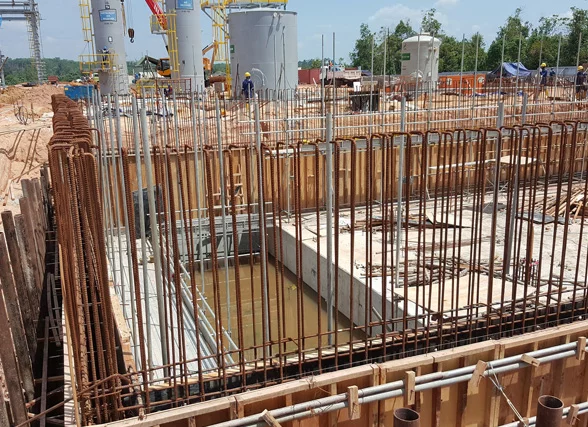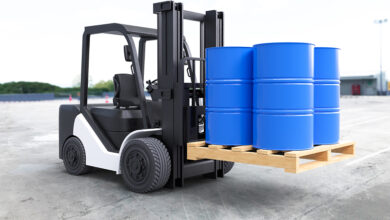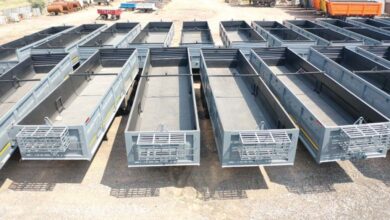
How Temporary Structure Engineers Support Complex Builds
In the world of modern construction, not every structure you see on-site is meant to last forever — yet these temporary frameworks are often just as critical as the final building itself. From scaffolding and event staging to bridge supports and construction shoring systems, temporary structures play an essential role in enabling safe, efficient, and cost-effective builds.
Behind every one of these systems are temporary structure engineers — highly skilled professionals who combine structural expertise, safety regulations, and innovative design to ensure that these provisional systems perform flawlessly under pressure.
Whether supporting skyscraper construction, large-scale public events, or complex bridge renovations, their work forms the invisible backbone of countless projects worldwide. Let’s explore how these engineers make complex builds possible — safely, precisely, and on time.
1. Understanding the Role of Temporary Structure Engineers
Temporary structure engineers specialize in designing and analyzing non-permanent systems that provide support, access, or protection during construction or event operations.
Unlike permanent structures, temporary systems must be:
- Flexible and adaptable for quick assembly and disassembly.
- Strong enough to handle heavy loads and dynamic forces.
- Compliant with strict safety codes and regulations.
Their designs ensure stability under real-world conditions — wind, vibration, load changes, and environmental impacts — without wasting materials or time.
2. What Qualifies as a Temporary Structure?
Temporary structures come in many forms depending on the project’s needs. Some of the most common include:
- Scaffolding systems for worker access and elevation.
- Formwork and falsework for supporting concrete pours.
- Shoring and propping to stabilize existing buildings during renovation.
- Temporary bridges and walkways for public access or logistics.
- Event structures like stages, seating stands, and tents.
Each type requires specialized engineering calculations to ensure it can withstand its unique loads and usage conditions safely.
3. Why Temporary Structures Are Vital to Construction
Temporary structures are the unsung heroes of construction. They:
- Provide safe access for workers to build, paint, or repair.
- Support loads and materials before permanent elements are in place.
- Enable complex architectural designs that wouldn’t otherwise be possible.
- Allow construction to continue safely even under difficult site conditions.
Without temporary engineering, many large projects — including bridges, towers, and stadiums — simply couldn’t be built.
4. Balancing Safety and Efficiency
Safety is the top priority in temporary structure engineering. Every system must meet or exceed design standards while remaining efficient to assemble and disassemble.
Engineers must calculate:
- Maximum load capacity (static and dynamic).
- Wind and weather resistance.
- Vibration and movement tolerances.
- Structural redundancy for unforeseen stresses.
They also ensure compliance with regional safety codes such as OSHA, BS EN, or Eurocode standards, depending on the location.
5. Advanced Design Tools and Simulation
Modern temporary structure engineers use advanced digital tools to model, simulate, and test designs before they’re built. Common technologies include:
- Finite Element Analysis (FEA) for stress and load simulation.
- Building Information Modeling (BIM) for detailed 3D coordination.
- Computer-Aided Design (CAD) for precision drafting and fabrication.
These tools allow engineers to predict how a structure will behave under different scenarios — identifying weak points and optimizing material use long before installation.
6. Collaboration Across Disciplines
Temporary structure engineering isn’t done in isolation. These engineers work closely with:
- Architects, to understand design intent.
- Construction managers, to coordinate schedules and logistics.
- Structural engineers, to align temporary systems with permanent supports.
- Health and safety officers, to ensure compliance and mitigate risks.
Effective collaboration ensures that temporary systems integrate seamlessly into the larger project, supporting every phase of construction.
7. Customization for Each Project
No two projects are identical — and neither are their temporary structures. Engineers must tailor each system to match specific conditions such as:
- Site layout and soil type.
- Load requirements (workers, equipment, materials).
- Space constraints and access routes.
- Project timelines and environmental factors.
Custom design ensures optimal performance and cost-efficiency while minimizing risk and waste.
8. Load Calculations and Stability Analysis
At the heart of temporary structure engineering are load and stability calculations. Engineers must evaluate multiple forces, including:
- Dead loads: The structure’s own weight.
- Live loads: Workers, machinery, and materials.
- Wind loads: Pressure and suction forces from high winds.
- Dynamic loads: Vibrations and impacts from movement.
These factors are analyzed in combination to ensure the structure remains stable even under worst-case conditions.
9. Temporary Structures in Large-Scale Construction
On major projects — like high-rise towers, stadiums, and bridges — temporary structures often represent a significant portion of the engineering effort.
Examples include:
- Tower crane foundations engineered for balance and stability.
- Temporary bridge decks to maintain traffic flow during construction.
- Heavy-duty shoring towers for elevated concrete slabs.
In these projects, failure isn’t an option. Temporary structure engineers meticulously plan and monitor every stage to ensure flawless performance.
10. Temporary Works in Infrastructure and Transportation Projects
Large infrastructure developments rely heavily on temporary works. In road, rail, and bridge projects, these structures provide essential support, safety, and continuity.
For instance:
- Temporary scaffolds enable bridge inspections and repairs.
- Falsework holds sections of concrete bridges while they cure.
- Shoring systems stabilize tunnels and embankments during excavation.
Each temporary system is designed with strict adherence to public safety standards — especially when located near traffic or populated areas.
11. Event and Entertainment Structures
Temporary structure engineers also play a major role in the entertainment and event industry, where large-scale installations must be both visually striking and structurally safe.
From outdoor music festivals to sporting events, these professionals design:
- Grandstands and bleachers.
- Lighting and sound towers.
- Temporary stages and roofs.
All must handle crowd loads, wind pressures, and quick installation timelines — often with zero margin for error.
12. Innovation and Sustainability in Temporary Design
Sustainability is becoming increasingly important in temporary works. Engineers now focus on:
- Modular, reusable components to reduce waste.
- Lightweight materials like aluminum or composite structures.
- Efficient assembly methods that minimize energy consumption.
- Recyclable materials for eco-friendly dismantling.
The shift toward greener temporary engineering ensures that even short-term systems leave a minimal environmental footprint.
13. Monitoring and Maintenance During Use
Once installed, temporary structures must be monitored regularly to ensure ongoing safety. Engineers often:
- Conduct load inspections during use.
- Check for signs of wear, corrosion, or displacement.
- Adjust supports as environmental conditions change.
This proactive approach helps prevent accidents and ensures long-term stability throughout the project duration.
14. Risk Assessment and Contingency Planning
Because temporary structures operate under tight timeframes and dynamic site conditions, engineers perform rigorous risk assessments before construction begins.
These assessments identify potential hazards such as:
- Load overcapacity.
- Unexpected weather events.
- Ground movement or vibration.
- Human error during assembly.
Contingency plans are then developed to mitigate these risks, ensuring maximum safety even in unpredictable environments.
15. The Future of Temporary Structure Engineering
The future of this field lies in automation, digital twins, and sustainable design. Engineers are already using smart sensors and AI-based monitoring systems to track real-time loads and detect early signs of structural fatigue.
Additionally, modular and prefabricated systems are making temporary structures faster and safer to deploy, while digital modeling tools are enabling precise, waste-free designs.
Final Thoughts
Temporary structure engineers are the unsung heroes behind some of the most complex and ambitious projects in construction and infrastructure. Their work ensures that temporary systems — though short-lived — perform with permanent precision and safety.
From scaffolding and shoring to bridge supports and event stages, their expertise transforms challenging environments into safe, workable spaces.




